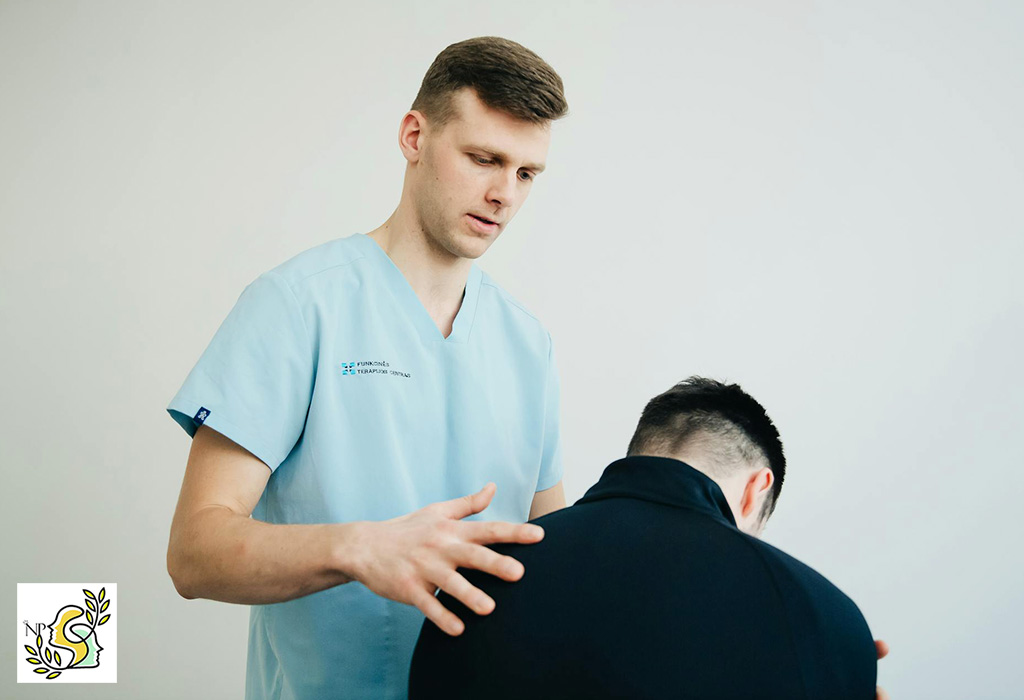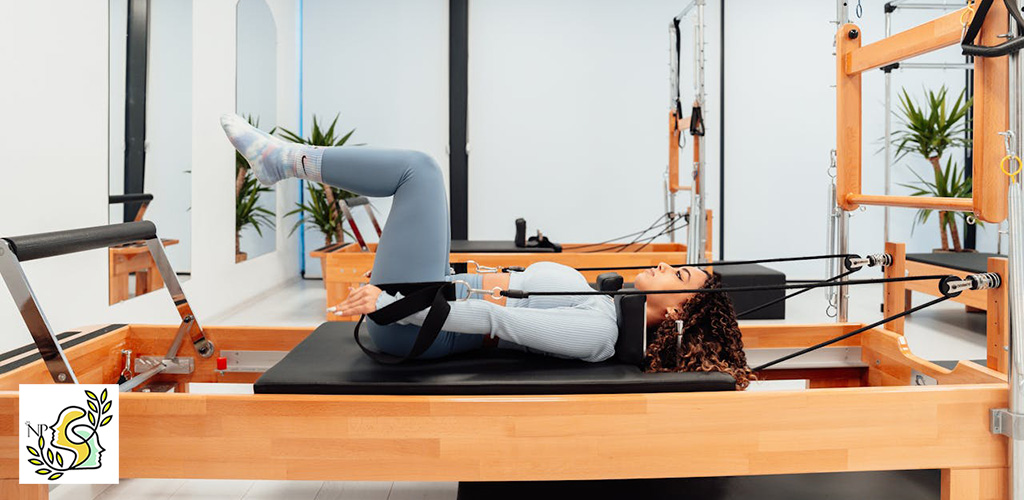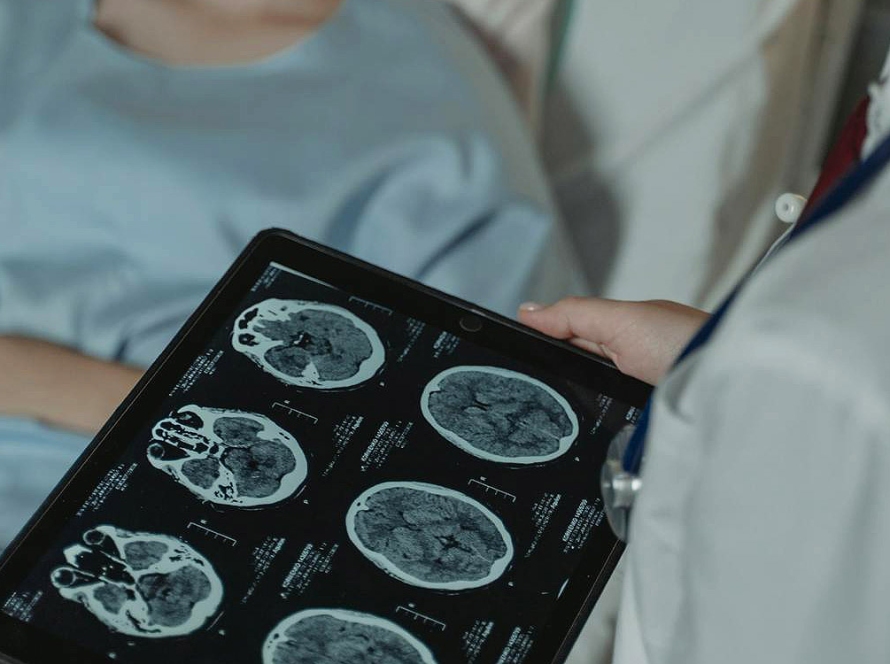Neuropsychological rehabilitation represents a critical domain within clinical psychology, dedicated to restoring cognitive, emotional, and behavioral capacities in individuals affected by neurological conditions. Such conditions encompass a wide spectrum, including traumatic brain injuries (TBI), cerebrovascular accidents (strokes), and progressive neurodegenerative disorders such as Alzheimer’s and Parkinson’s diseases. The principal objective of neuropsychological rehabilitation is to mitigate the impact of these impairments, thereby enhancing patients’ quality of life and facilitating their functional independence in daily activities. A comprehensive understanding of the principles underlying this discipline is indispensable for clinicians in neuropsychology, as it provides the basis for devising tailored therapeutic interventions. This paper seeks to examine the fundamental aspects of neuropsychological rehabilitation, with a focus on assessment methodologies, intervention strategies, and the theoretical models that inform clinical practice in this specialized field.
Table of Contents
What is neuropsychological rehabilitation?

Neuro rehab or Neuropsychological rehabilitation represents a structured framework of interventions aimed at enhancing cognitive, emotional, and psychosocial functioning following brain alterations. These interventions encompass both individual and group-based cognitive rehabilitation, psychotherapy, and psychoeducation. Psychosocial approaches address dimensions within personal, physical, and social contexts, incorporating strategies such as family-focused psychotherapy, psychoeducation, and vocational training programs. The neuropsychological rehabilitation impact factor serves as a key metric in evaluating the influence and quality of research published within the field of cognitive recovery and therapy. (4)
Neuropsychology is a scientific discipline focused on examining the physiological mechanisms of the nervous system and their connections to behavior and cognitive processes. This includes investigations into both typical functioning and the disruptions that occur as a result of brain damage. In the field of mental health, the primary role of a neuropsychologist is to assess and characterize the extent and patterns of cognitive impairments, as well as to evaluate how these deficits may influence an individual’s functional abilities.
Innovative techniques in neuropsychological rehabilitation have demonstrated significant potential in improving cognitive function and emotional regulation in patients with brain injuries. These neuropsychological rehabilitation techniques encompass a variety of approaches, including physical therapy, speech therapy, occupational therapy, thermotherapy, and other techniques aimed at stimulating specific neural functions. Over the past two decades, there has been a substantial expansion in technology-driven rehabilitation strategies, such as robotic systems, wearable devices, brain stimulation techniques, and virtual environments. (1,2)
What are the components of neurological rehabilitation?
Neurological rehabilitation comprises multiple components aimed at addressing the complex needs of patients with neurological impairments. These include:
- Assessment and Evaluation: The initial phase involves a comprehensive evaluation of neurological deficits. This includes obtaining a detailed medical history, conducting physical examinations, and performing diagnostic tests to identify the extent of the impairment.
- Goal Setting: Rehabilitation employs SMART (specific, measurable, achievable, relevant, and time-bound) objectives, collaboratively established with patients and their families, to create a structured pathway for recovery.
- Physical Therapy: This focuses on improving range of motion, muscle strength, balance, and coordination. Interventions may include prescribed physical activity regimens, manual therapy techniques, and the introduction of adaptive equipment to facilitate functional recovery.
- Occupational Therapy: Occupational therapists assist patients in regaining or adapting to essential daily living activities, such as dressing, eating, and personal hygiene, while addressing cognitive or physical limitations.
- Speech and Language Therapy: Speech-language pathologists address communication challenges arising from neurological conditions and manage dysphagia (swallowing difficulties) when present.
- Cognitive Rehabilitation: This aspect targets the enhancement of cognitive skills, including memory, attention, problem-solving, and reasoning, particularly for individuals with cognitive impairments or brain injuries.
- Psychological Support: Emotional and mental health support is integral to neurorehabilitation. Psychologists or counselors help patients cope with the psychological impact of neurological disorders.
- Medication Management: Pharmacological interventions play a role in managing symptoms and, in some cases, slowing disease progression. Effective medication management optimizes rehabilitation outcomes.
- Assistive Devices and Technology: The use of assistive tools, such as wheelchairs, walkers, or communication aids, is often recommended. Patients are provided with training to maximize the utility of these devices.
- Nutritional Counseling: Dietitians may be involved to address dietary challenges, such as difficulty swallowing, ensuring that patients maintain adequate nutritional intake.
- Family and Caregiver Education: Educating caregivers is crucial to ensure they can assist with home-based exercises, daily tasks, and the overall recovery process.
- Community Reintegration: Rehabilitation often includes strategies to support the patient’s reintegration into society, with vocational or educational retraining programs where feasible.
- Progress Monitoring: Regular assessments track the patient’s progress, enabling adjustments to the rehabilitation plan as needed to achieve the desired outcomes.
- Discharge Planning: When rehabilitation goals are met or progress plateaus, a discharge plan is developed to provide guidance and ensure continuity of care.
- Long-Term Follow-Up: Many neurological conditions require ongoing monitoring and care. Specialists provide continuous evaluation and modifications to the treatment plan to sustain improvements and address emerging needs. (6,8,9)
Types of Diseases and Disorders Related to Neuropsychological Rehabilitation

Neuropsychological rehabilitation (NR) is a specialized field aimed at mitigating cognitive, emotional, psychosocial, and behavioral impairments resulting from brain injuries or disorders. Significant advancements in NR have emerged in recent years, particularly with the adoption of a goal-oriented approach. This methodology emphasizes collaborative planning between brain injury survivors, their families, and clinical professionals to identify and achieve tailored rehabilitation objectives.
A core principle of modern NR is the recognition of the interconnectedness between cognitive, emotional, and psychosocial domains, which necessitates a comprehensive, holistic approach to therapy. Increasingly, technological tools are utilized to address cognitive deficits, with various aids demonstrating efficacy in compensating for impaired functions.
NR also encompasses the treatment of a wide spectrum of neuropsychological disorders, including traumatic brain injuries (TBI), stroke, neurodegenerative diseases (e.g., Alzheimer’s and Parkinson’s), epilepsy, and functional neurological disorders. Moreover, it addresses cognitive impairments linked to psychiatric conditions, developmental disorders, and aging-related decline. (4,2,3,1)
Brain injury recovery
In cases where stroke or traumatic brain injury results in damage to, but not complete destruction of, brain tissue, functional recovery is possible over time. This process may extend from six months to several years, with rehabilitation playing a critical role in accelerating and enhancing the extent of recovery. While brain tissue that is entirely destroyed cannot regain its function, other regions of the brain may compensate by assuming some of the lost functions, a process facilitated by targeted rehabilitation efforts. However, the degree and timeline of functional recovery remain unpredictable. Therefore, rehabilitation typically commences once the individual is medically stable, as early intervention also mitigates secondary complications such as muscle contractures, muscle weakness, and depression.
A comprehensive evaluation, including psychological assessments, enables the rehabilitation team to determine the extent and nature of the damage. This evaluation informs the development of a customized rehabilitation program tailored to the individual’s specific needs. Factors influencing the success of rehabilitation include the person’s overall health, range of motion, muscle strength, bowel and bladder control, pre-injury functional capacity, social support, cognitive abilities, motivation, coping mechanisms, and willingness to engage in therapy. (11,12,16)
please listen now to: Neuropsychological Rehabilitation After Acquired Brain Injury – A Conversation With Dr. Dana Wong.
Traumatic brain injury (TBI) rehab
Traumatic brain injury (TBI) is a condition that results from a sudden external force causing damage to the brain. A closed head injury refers to brain damage caused by a significant impact to the head without penetration of the skull, whereas a penetrating head injury occurs when an object breaches the skull and enters brain tissue.
neuropsychological rehabilitation after brain injury plays a critical role in the recovery process for individuals who have experienced TBI. The rehabilitation process is tailored to the patient’s specific needs and may encompass physical therapy, occupational therapy, speech-language therapy, psychiatric care, and social support. These interventions aim to maximize recovery and address the diverse impacts of the injury.
The objectives of rehabilitation include:
- Enhancing functional independence in home and community settings.
- Addressing cognitive, emotional, and physical challenges associated with TBI.
- Providing essential social and emotional support.
- Facilitating adaptation to changes that may occur throughout the recovery process.
Rehabilitation also aims to prevent secondary complications of TBI, such as:
- Thromboembolic events (e.g., blood clots).
- Pain syndromes.
- Pressure ulcers (bedsores).
- Respiratory issues, including pneumonia.
- Orthostatic hypotension (a drop in blood pressure upon movement).
- Muscle atrophy or spasticity.
- Bowel and bladder dysfunction.
- Impairments in reproductive and sexual health.
A comprehensive rehabilitation approach is essential for mitigating these risks and improving the overall quality of life for individuals recovering from TBI. (10,12,13)
Post-concussion therapy
Post-concussion syndrome (PCS) refers to the persistence of symptoms following a mild traumatic brain injury (mTBI). Without intervention, these symptoms can persist for months, years, or even decades post-injury. PCS often leads to significant confusion, uncertainty, and anxiety for affected individuals. Despite a confirmed diagnosis, effective treatment is not always readily accessible, as specialists in PCS and its management are relatively scarce.
Conventional imaging techniques, such as structural magnetic resonance imaging (MRI) and computed tomography (CT), cannot detect PCS. While these methods are effective for identifying structural brain damage, such as tissue injury, hemorrhages, or skull fractures, PCS stems from functional communication disruptions within the brain, which these scans are unable to assess.
Functional neurocognitive imaging (fNCI) has emerged as a method to identify functional abnormalities in brain activity following head trauma. This imaging modality provides insights into the neural mechanisms underlying PCS, offering a diagnostic tool where traditional imaging falls short.
The management of PCS generally involves two approaches: active rehabilitation through therapy and the use of medication. Active rehabilitation, encompassing a multidisciplinary therapy regimen, is currently the most effective strategy for restoring cognitive function. However, comprehensive therapy programs are often inaccessible due to the specialized and resource-intensive nature of these treatments.
Medication is considered a secondary option, typically reserved for alleviating specific symptoms during recovery. While it does not address the root causes of PCS, it may provide temporary relief. Nevertheless, medications can introduce side effects that may exacerbate other symptoms, necessitating careful consideration before use. (18,19,20)
Stroke recovery
Stroke recovery is a variable process that can take weeks, months, or even years. While some individuals achieve full recovery, others may experience lasting or permanent disabilities. Stroke management involves a multidisciplinary healthcare team, often including specialists in neurology, rehabilitation, and mental health. Proactive measures to prevent recurrent strokes and monitor long-term complications are essential. neuropsychology stroke rehabilitation plays a pivotal role in recovery, often involving speech, physical, and occupational therapies. Pharmacological interventions may be prescribed to manage symptoms such as pain or muscle spasms.
Stroke Rehabilitation, Neuropsychological Approaches to Recovery may involve managing both internal and external distractions or breaking tasks into smaller, more manageable steps or shorter durations. Distractions may arise from auditory or visual stimuli, as well as from physical sensations, emotions, or internal thoughts. Since attention is a foundational skill necessary for effective information processing, memory, and executive functioning, both basic and complex attention will be evaluated and addressed to improve performance in tasks initially perceived as memory- or executive-function-based.
In addition to addressing various levels of attention, cognitive rehabilitation may also target unilateral visual neglect as part of attention-related interventions. Speech-language pathologists (SLPs) design interventions aimed at enhancing awareness of the neglected visual field and improving attention to that side during communication activities such as reading and writing. Techniques include multimodal cueing and the use of brightly colored materials to facilitate responses to stimuli in the affected visual field during tasks such as picture description, reading, following written instructions, or completing instrumental activities of daily living (IADLs). (1,2,5,7,8)
Neurocognitive rehabilitation
Cognitive rehabilitation therapy (CRT) encompasses a diverse range of evidence-based interventions aimed at enhancing cognitive functioning in individuals with brain injuries or cognitive impairments. These interventions are designed to either restore normal cognitive functioning or compensate for cognitive deficits. CRT typically involves a tailored program combining targeted skills training with metacognitive strategies, which focus on improving self-awareness and problem-solving abilities. Through these strategies, individuals learn to monitor the effectiveness of their cognitive processes and make adjustments as needed.
CRT does not adhere to a single standardized approach. Instead, it involves collaboration among various healthcare professionals to create a comprehensive plan that maximizes functional recovery. The overarching goal is often to restore brain function or promote neural plasticity by reorganizing neural pathways to compensate for injuries. For instance, a speech-language pathologist (SLP) might assist a patient in relearning familiar words, while a physical therapist might facilitate the practice of challenging movements to improve motor coordination through neural adaptation.
When complete restoration of brain function is not feasible, CRT emphasizes the development of adaptive strategies. These may include the use of assistive devices to enhance communication or mobility, thereby improving the individual’s quality of life despite persistent deficits. (4)
Memory rehabilitation
Memory impairments are a common complaint among individuals with neurological dysfunction, despite the complexity of memory processes, which are difficult to enhance in any population. These impairments are frequently addressed in comprehensive brain rehabilitation programs, with neuropsychologists often tasked with evaluating the nature, characteristics, prognosis, and treatment needs of such disorders. Cognitive stimulation therapy (CST) involves structured activities designed to stimulate thinking, attention, communication, and memory in individuals with dementia. These activities typically include discussions on daily interests, past experiences, and relevant current information.
Engaging in regular physical exercise promotes brain cell growth and increases neurotransmitter production, thereby supporting memory function. A combination of aerobic and strength training exercises is considered most effective. Inadequate sleep can negatively impact cognitive performance, so it is recommended to aim for seven to nine hours of sleep per night.
To improve memory, the following strategies are recommended:
- Engage in daily physical activity to improve blood circulation, including to the brain.
- Participate in mentally stimulating activities to maintain cognitive function.
- Socialize regularly to promote cognitive and emotional well-being.
- Stay organized to reduce cognitive overload.
- Ensure adequate sleep to support memory consolidation.
- Follow a nutritious diet to support brain health.
- Manage chronic health conditions to prevent additional cognitive decline.
Rehabilitation of memory after brain injury involves targeted cognitive therapies to restore neural functions and improve recall capabilities. Individuals who have experienced a traumatic brain injury (TBI) may not recall the event itself. This occurs because the brain fails to encode the incident as a memory or a series of memories. Following the injury, individuals may experience confusion and an inability to form new memories for a period of time. This condition, known as post-traumatic amnesia (PTA), is characterized by memory loss from the moment of the TBI onward. The duration of PTA can range from a few minutes to several weeks or months, depending on the severity of the brain injury.
To mitigate memory challenges associated with TBI, several compensatory strategies can be employed:
- Minimize distractions before engaging in tasks requiring memory.
- Request that others speak more slowly or repeat information to ensure comprehension.
- Allocate additional time to practice, repeat, or rehearse information for better retention.
- Utilize tools such as organizers, notebooks, or digital applications to manage essential information, including appointments, tasks, and contact details.
- Establish a designated “memory station” at home—such as a table near the door or a specific countertop area—for items like keys, wallets, and phones.
- Use a pill organizer to accurately track and manage medications.
- Employ checklists to monitor completed tasks or steps in a process. For instance, maintain a checklist of monthly bills and their respective due dates. (6,11,17)
Executive function training

Executive function encompasses cognitive processes that enable individuals to set and achieve goals, solve problems, and regulate emotions. These cognitive skills, often referred to as executive functioning skills, play a crucial role in overall mental and physical health, as well as in determining quality of life. Strong executive function is associated with enhanced well-being. The twelve core executive functioning skills include self-regulation, working memory, emotional control, concentration, task initiation, planning and prioritization, organization, time management, goal setting and attainment, adaptability, observational skills, and stress resilience.
Activities that have been shown to improve executive functioning include:
- The arts (e.g., music, dance, theater).
- Open-skill sports, such as soccer or basketball, which require dynamic decision-making.
- Traditional martial arts, which focus on self-discipline, self-regulation, and character development.
- Wilderness survival tasks, requiring problem-solving and adaptability.
- Woodworking, which demands planning, organization, and attention to detail.
- Cooking, which involves multitasking and time management.
Vocational rehabilitation
Vocational rehabilitation (VR) is a process designed to assist individuals with disabilities—whether functional, psychological, developmental, cognitive, or emotional—in overcoming obstacles that hinder their access to, retention in, or return to employment or other productive activities. Traditionally, vocational rehabilitation has emphasized job retention, but contemporary models increasingly advocate for a more holistic approach. The specific methods of vocational rehabilitation vary across countries due to differences in the financial and political support these programs receive.
A substantial body of research has been dedicated to refining and advancing vocational rehabilitation practices. The modern emphasis on vocational rehabilitation emerged alongside the growing focus on social security systems at the governmental level. Vocational rehabilitation is considered beneficial for facilitating individuals’ return to the workforce and promoting their full integration into society. Additionally, such rehabilitation programs aim to reduce dependency on governmental financial assistance by improving employment opportunities for individuals with disabilities, who are often marginalized in the workforce. (14)
Neuropsychological Rehabilitation for Schizophrenia and Psychiatric Conditions
Neuropsychological rehabilitation helps people to re-learn the cognitive skills that may have been lost over time, and also helps people cope better with their cognitive problems. In clinical neuropsychology, a range of interventions are employed to mitigate the symptoms of schizophrenia. These interventions include cognitive-behavioral therapies, social skills training, and cognitive rehabilitation programs. The primary objective of neuropsychological rehabilitation is to enhance individuals’ independence by improving their capacity to manage various aspects of daily life, such as household maintenance, financial management, relationship development, and community navigation.
Cognitive retraining has demonstrated efficacy in individuals with schizophrenia, facilitating improvements in cognitive functions and enhancing both social and occupational functioning. When combined with family-based interventions, cognitive retraining has also been associated with enhanced interpersonal relationships.
Rehabilitation Techniques for Patients with Dementia and Cognitive Decline
Rehabilitation strategies for individuals with dementia and cognitive decline primarily emphasize Cognitive Stimulation Therapy (CST), an evidence-based intervention targeting multiple cognitive domains such as memory, attention, and problem-solving. CST typically incorporates structured activities, including discussions, reminiscence exercises, and cognitive games, designed to promote engagement and improve cognitive functioning. These interventions are often complemented by physical therapy to preserve mobility and address associated physical limitations. Personalized approaches tailored to the individual’s unique needs, preferences, and objectives are central to optimizing therapeutic outcomes and enhancing quality of life. (20)
Conclusion
Neuropsychological rehabilitation represents a dynamic, multidisciplinary scientific field focused on enhancing the quality of life for individuals experiencing cognitive, emotional, and behavioral impairments due to neurological conditions. Fundamental principles of this discipline include neuroplasticity, the brain’s capacity to reorganize and adapt, and the development of personalized interventions tailored to the specific needs of each individual. The approach integrates cognitive, emotional, and social dimensions of recovery, emphasizing evidence-based methodologies and fostering interdisciplinary collaboration. Furthermore, the active engagement of patients and their support systems plays a critical role in optimizing outcomes. By merging insights from neuroscience with practical rehabilitation strategies, this field continues to advance, promoting resilience, functional independence, and a deeper understanding of the mechanisms underlying brain recovery.
And finally, we suggest you watch one of the most complete videos about Neuropsychological Rehabilitation with Dr. josh fox-fuller’s explanations until the end.
Frequently Asked Questions
Frequently Asked Questions about neuropsychological rehabilitation:
What is neuropsychological rehabilitation?
Goals of neuropsychological rehabilitation include assisting individuals with neurological damage to function in their environment as adequately as possible and to improve aspects of everyday life
What is neuropsychology treatment?
Neuropsychological treatment seeks to assist children, adolescents and adults with a variety of neurological, medical, and psychological conditions to improve their daily functioning.
Is neuropsychological rehabilitation peer-reviewed?
All submitted manuscripts are subject to initial appraisal by the Editor, and, if found suitable for further consideration, to peer review by independent, anonymous expert referees.
What is the job of neuropsychology?
A neuropsychologist is an expert in how brain injuries and conditions affect your behavior, mood and thinking skills.
How to do neuro rehabilitation?
One of the key tactics for neuro rehabilitation is physical therapy (PT). It consists of movements and tasks meant to enhance balance, coordination, and motor function.
What is psychology rehabilitation?
The specialty of rehabilitation psychology addresses behavioral and mental health issues faced by individuals across the lifespan who are affected by any injury or chronic condition that leads to disability,
What are neuro rehab concepts?
Neurorehabilitation is a medical process that aims to aid recovery from nervous system injuries and minimize or compensate for functional changes caused by these injuries.
Who needs neuro rehabilitation?
Some of the conditions that neurological rehab may help with include: Vascular disorders, such as a stroke, bleeding in the brain, or transient ischemic attacks (TIAs) Infections, such as meningitis, encephalitis, polio, and brain abscesses.
What are the examples of psychological rehabilitation?
adherence therapy, psychoeducation, cognitive-behavioral therapy, interpersonal and social rhythm therapy, cognitive remediation, social skills training, family education, vocational rehabilitation, case management, assertive
What are the psychological therapies in rehabilitation?
clinical interviews, behavioral observations, and a wide range of standardized test instruments. Psychological interventions can involve direct intervention with the patient, in individual, family or group-based therapies.
What are the methods of neuropsychological rehabilitation?
Physical therapy, speech therapy, occupational therapy, hot and cold therapy, and other methods that “exercise” specific brain functions are used
What are the key concepts of rehabilitation neuropsychology?
Interventions include individual- and group cognitive rehabilitation, psychotherapy, and psychoeducation.
What are the principles of neuro rehabilitation of neurological conditions?
Important principles for neurological rehabilitation have been previously summarized and include patient centered care, the ICF, teamwork, prediction, neural plasticity, motor control, functional movement reeducation, skill acquisition, self-management and health promotion.
References:
- https://pubmed.ncbi.nlm.nih.gov/29366371/
- https://pubmed.ncbi.nlm.nih.gov/30033818/
- https://pubmed.ncbi.nlm.nih.gov/30935346/
- https://pubmed.ncbi.nlm.nih.gov/30896282/
- https://pubmed.ncbi.nlm.nih.gov/29544391/
- https://pubmed.ncbi.nlm.nih.gov/34596002/
- https://pubmed.ncbi.nlm.nih.gov/32869697/
- https://pubmed.ncbi.nlm.nih.gov/32325009/
- https://pubmed.ncbi.nlm.nih.gov/33467990/
- https://pubmed.ncbi.nlm.nih.gov/27487525/
- https://pubmed.ncbi.nlm.nih.gov/39115030/
- https://pubmed.ncbi.nlm.nih.gov/38912923/
- https://pubmed.ncbi.nlm.nih.gov/38452517/
- https://pubmed.ncbi.nlm.nih.gov/39492814/
- https://pubmed.ncbi.nlm.nih.gov/38781515/
- https://pubmed.ncbi.nlm.nih.gov/38036103/
- https://pubmed.ncbi.nlm.nih.gov/38118457/
- https://pubmed.ncbi.nlm.nih.gov/17716045/
- https://www.uhhospitals.org/for-clinicians/articles-and-news/articles/2019/10/neuropsychological-rehabilitation-a-primer-for-physicians
- https://www.researchgate.net/publication/236855464_Neuropsychological_Rehabilitation_Theory_Models_Therapy_and_Outcome
- https://www.tandfonline.com/journals/pnrh20
- https://www.tandfonline.com/toc/pnrh20/current


